The Philodendron Red Heart is a stunning addition to any indoor garden. Known for its vibrant red leaves and easy-care nature, this plant can add a touch of exotic beauty to your home. This comprehensive guide will provide you with all the information you need to grow and care for the Philodendron Red Heart successfully.
Introduction
The Philodendron Red Heart is a member of the aroid plant family, which includes popular varieties like Monstera, Anthurium, and Aglaonema. Native to the tropical rainforests of Central and South America, this plant is prized for its striking red foliage that stands out among other green houseplants. Similar to Epipremnum and Syngonium, the Philodendron Red Heart is not only beautiful but also relatively easy to care for.

1. Choose the Right Location
Philodendrons thrive in bright, indirect light. Place your Red Heart in an east or west facing window where it will get plenty of gentle sunlight in the morning or afternoon. Avoid direct southern light which can scorch the leaves. Also make sure to protect it from drafts which can cause leaf spotting. An ideal spot is near a window with a sheer curtain to filter the sunlight.
The Red Heart also likes warm temperatures between 65-80°F. Keep it away from cold drafts from windows or air conditioning vents. Cooler temperatures below 60°F can slow growth and cause leaves to turn yellow. Warmer humid locations are ideal, such as kitchens and bathrooms. Just watch for direct hot sunlight which can burn the foliage.
2. Use Well-Draining Potting Mix
Philodendrons need a light, airy potting soil that drains well. A good mix contains equal parts peat moss or coconut coir, compost, and perlite or bark chips. Make sure the pot has drainage holes to prevent soggy soil. To find out more about the best soil types and mixtures for your Philodendron, you can refer to our extensive guide
You can buy pre-mixed “indoor plant” or “tropical plant” potting soils that work well. Or make your own mix with 1 part potting soil, 1 part compost or worm castings, and 1 part perlite. Adding orchid bark also improves drainage.
Heavy potting mixes like garden soil or regular potting mix can suffocate the roots and cause root rot. Choose a lightweight, porous mix and your Red Heart will thrive.

3. Water When the Top Inch is Dry
Philodendrons should be watered whenever the top 1-2 inches of the potting mix dries out. Use your finger to check the moisture level. Water thoroughly until it drains freely from the bottom drainage holes. This ensures the entire root zone is hydrated.
In general, the Red Heart needs watering about once a week in warmer months when actively growing. Reduce watering frequency in the winter when growth slows. The thick fleshy leaves store water so droughts are tolerated, but extended dry periods will cause leaf browning.
Always water early in the day to allow the foliage to dry by nighttime. Wet leaves overnight invite fungal diseases. Never let the plant sit in waterlogged soil which can rot the roots.

“Discover the vibrant beauty of the Philodendron Red Heart! Click now to bring this stunning plant into your home and elevate your space with its unique charm. Shop now for an exclusive offer!”
4. Fertilize Regularly in Spring and Summer
Feed your Philodendron Red Heart with a balanced liquid fertilizer during the active growing season from spring to summer. Dilute the fertilizer to half strength and use every 2-4 weeks. Look for a formula rated for indoor plants, orchids or tropicals.
Fertilizing improves leaf growth and color by providing key nutrients the plant needs. Stop fertilizing in fall and winter when light levels and temperatures drop. Excess fertilizer on a dormant plant can burn the roots.
As an alternative to chemical fertilizers, you can use compost tea or organic fish emulsion. Mix as directed and fertilize on the same schedule. Provide micronutrients by spraying leaves with epsom salts monthly.
5. Prune to Shape the Plant
Prune back your Red Heart as needed to shape the plant and remove any dead or damaged foliage. Snap off yellow leaves at the base of the stem. Damaged leaves invite pests and diseases.
You can prune leggy stems back to just above a node or branching point to encourage bushier growth. Wipe pruning shears with alcohol between each cut to avoid spreading disease.
Philodendrons are forgiving plants and will rebound after moderate pruning. But avoid taking off more than 1/3 of the foliage at one time. New growth may be slower after heavy pruning.
Occasional pruning keeps your Philodendron Red Heart full and compact. Always sterilize tools before each use to maintain a healthy plant.
Philodendron species are the most sought after by aroid plant lovers
Conclusion
With its beautiful heart-shaped red leaves, the Philodendron Red Heart makes a striking houseplant for any indoor garden. Follow these 5 key care tips – proper light, well-draining soil, attentive watering, regular feeding, and strategic pruning – and your Red Heart will thrive for years to come. Consistent care allows this exotic tropical to reach its full potential with lush, vibrant foliage. Soon you’ll have a showstopping specimen to brighten up any living space.






![12x Monstera Borsigiana Albo half leaves variegata [3-4 leaves]](https://greenboog.com/wp-content/uploads/2024/10/Monstera-Borsigiana-Albo-half-leaves-variegata-1-500x500.jpg)



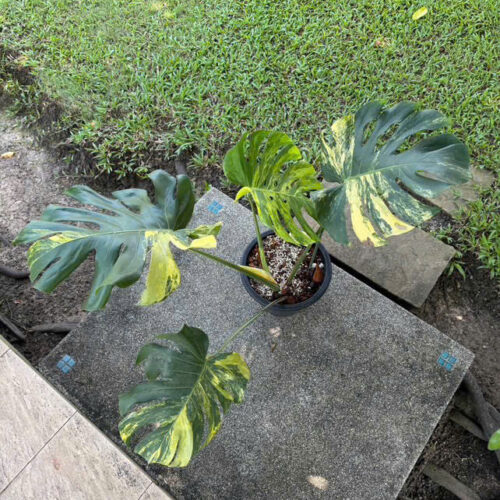



![10 Pots x Monstera Aurea Variegated / Mix Aurea tri color 3-4 leaves [well variegated]](https://greenboog.com/wp-content/uploads/2024/08/Monstera-Aurea-Tri-color-500x500.jpg)


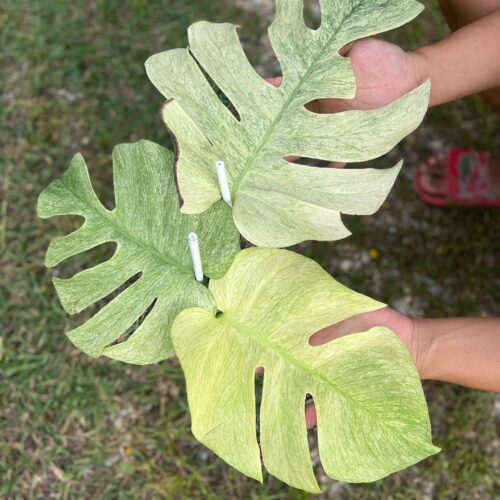

![[SALE] 10 Pots x Monstera Aurea Variegated 3-6 leaves [Medium size]](https://greenboog.com/wp-content/uploads/2025/01/Monstera-Aurea-variegated-4-6-leafs-500x482.jpg)

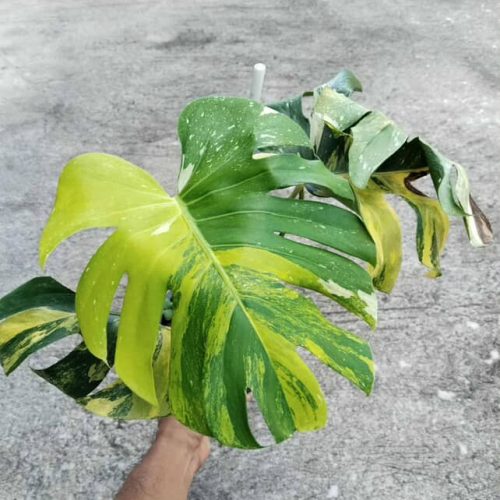







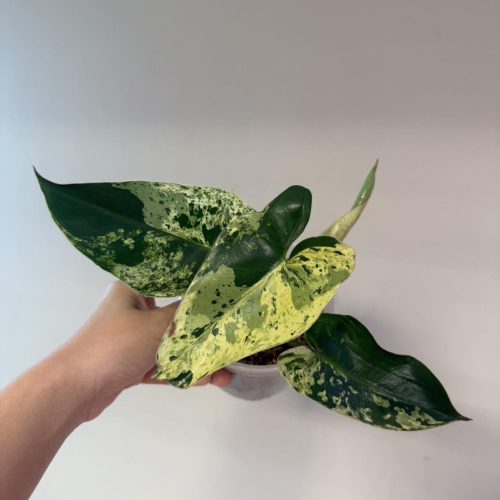









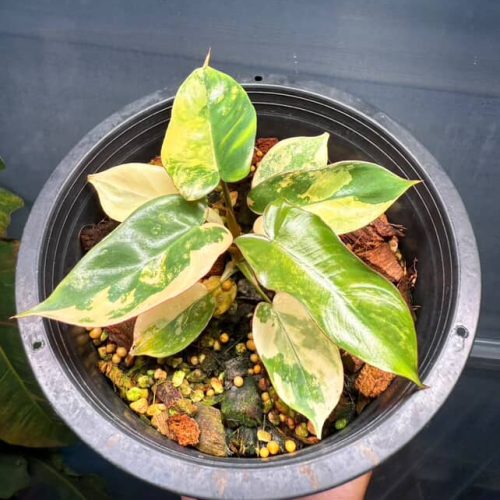


My red heart philo has been dropping leaves. Can you suggest why it may be doing this?
When a Philodendron Red Heart drops leaves, it’s usually a sign of stress. Here are some possible reasons and solutions:
Overwatering
Symptoms: Yellowing leaves before dropping, soggy soil.
Solution: Ensure the soil dries out partially between waterings. Use well-draining soil and a pot with drainage holes.
Underwatering
Symptoms: Crispy or curled leaves that fall off.
Solution: Water the plant thoroughly when the top 1-2 inches of soil feel dry. Avoid letting it dry out completely for extended periods.
Lighting Issues
Too little light: Leaves may drop due to insufficient photosynthesis.
Too much direct sunlight: Scorched leaves can drop.
Solution: Place the plant in bright, indirect light. Avoid prolonged exposure to harsh direct sunlight.
Temperature Stress
Symptoms: Sudden leaf drop can occur due to exposure to drafts, cold temperatures, or extreme heat.
Solution: Maintain a stable environment with temperatures between 65–80°F (18–27°C). Keep the plant away from cold drafts or heating vents.
Humidity Levels
Symptoms: Dry, crispy leaves in low humidity.
Solution: Increase humidity by misting the plant, using a humidifier, or placing it near a pebble tray filled with water.
Nutrient Deficiency or Excess
Symptoms: Discolored or weak leaves before falling off.
Solution: Feed the plant with a balanced liquid fertilizer diluted to half-strength once a month during the growing season (spring and summer).
Pests or Disease
Symptoms: Yellowing, spots, or webbing on leaves before they drop.
Solution: Inspect the plant for pests like spider mites, mealybugs, or scale. Treat with insecticidal soap or neem oil. Check for signs of fungal diseases like root rot and address accordingly.
Natural Aging
Symptoms: Older leaves near the base drop occasionally.
Solution: This is normal. Focus on new growth to assess overall health.
Check these conditions one by one to determine what might be causing the problem. Adjust care practices accordingly, and your Philodendron Red Heart should recover and thrive.